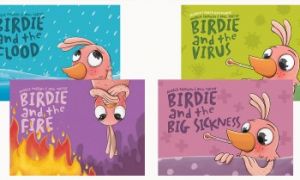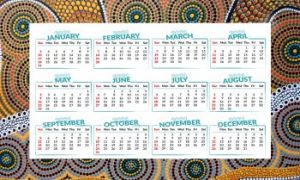

A clear, practical EYLF Outcome 1 cheat sheet for educators, with examples, observation wording, and strategies to document children’s identity, belonging, autonomy, emotional well-being, and respectful relationships across daily routines.
Outcome 1 is the foundation of early childhood learning; everything else grows from here. It focuses on children’s identity: how they see themselves, how safe and supported they feel, and how they relate to others. When children experience belonging, security, autonomy, emotional well-being, and respectful relationships, they develop the confidence and resilience needed for all future learning.
This cheat sheet gives educators a practical, easy‑to‑use guide to understanding, observing, and documenting Outcome 1 across everyday routines. With clear indicators, real-world examples, and ready‑to‑use documentation prompts, educators can capture meaningful learning without unnecessary paperwork.
Summative assessments are more than end-point reflections—they’re storytelling tools that honour each child’s journey. They help educators celebrate growth, identify emerging skills, and co-plan intentional next steps. This guide is designed for quick glances during documentation, team huddles, or family meetings, keeping your language strengths-based, specific, and emotionally resonant.
Use it to:
Here’s an educator-friendly EYLF V2.0 Reference Sheet designed for quick use in planning, documentation, and reflection. It’s structured to support intuitive linking between observations and outcomes, with simplified language and examples to spark educator insight.
The following is a cheat sheet for Quality Area 2. Quality Area 2 of the National Quality Standard (NQS) is the heartbeat of safe, responsive, and nurturing early childhood environments. It affirms that every child has the right to feel safe, be healthy, and thrive—physically, emotionally, and developmentally.
The following is a concise yet powerful cheat sheet for Quality Area 1: Educational Program and Practice, tailored for your advocacy and sector leadership lens. This distills the core elements, documentation strategies, and reflective prompts to support both compliance and authentic pedagogy.
The Early Years Learning Framework (EYLF) guides how we document, plan, and reflect on children’s learning in Australia. But with time pressures, ratio demands, and competing priorities, educators need tools that make framework integration achievable and empowering. This cheat sheet distills key EYLF elements into practical prompts and linking keywords—so teams can streamline observation cycles, make meaningful outcome connections, and stay child-focused every step of the way.
Here's a practical educator cheat sheet tailored for writing summative assessments in early childhood settings—designed to be clear, efficient, and aligned with EYLF outcomes. The following article provides information on Structuring Your Summary, Linking to EYLF Outcomes, Prompts to Get You Started, Expanded Prompt Starters by Theme, EYLF Outcome-Based Prompt Starters, Prompt Starters For Babies, Toddlers and Preschoolers, Tips For Writing and more.
 Here is the list of the EYLF Learning Outcomes that you can use as a guide or reference for your documentation and planning. The EYLF… Read More
Here is the list of the EYLF Learning Outcomes that you can use as a guide or reference for your documentation and planning. The EYLF… Read More
 The EYLF is a guide which consists of Principles, Practices and 5 main Learning Outcomes along with each of their sub outcomes, based on identity,… Read More
The EYLF is a guide which consists of Principles, Practices and 5 main Learning Outcomes along with each of their sub outcomes, based on identity,… Read More
 This is a guide on How to Write a Learning Story. It provides information on What Is A Learning Story, Writing A Learning Story, Sample… Read More
This is a guide on How to Write a Learning Story. It provides information on What Is A Learning Story, Writing A Learning Story, Sample… Read More
 One of the most important types of documentation methods that educators needs to be familiar with are “observations”. Observations are crucial for all early childhood… Read More
One of the most important types of documentation methods that educators needs to be familiar with are “observations”. Observations are crucial for all early childhood… Read More
 To support children achieve learning outcomes from the EYLF Framework, the following list gives educators examples of how to promote children's learning in each individual… Read More
To support children achieve learning outcomes from the EYLF Framework, the following list gives educators examples of how to promote children's learning in each individual… Read More
 Reflective practice is learning from everyday situations and issues and concerns that arise which form part of our daily routine while working in an early… Read More
Reflective practice is learning from everyday situations and issues and concerns that arise which form part of our daily routine while working in an early… Read More
 Within Australia, Programming and Planning is reflected and supported by the Early Years Learning Framework. Educators within early childhood settings, use the EYLF to guide… Read More
Within Australia, Programming and Planning is reflected and supported by the Early Years Learning Framework. Educators within early childhood settings, use the EYLF to guide… Read More
 When observing children, it's important that we use a range of different observation methods from running records, learning stories to photographs and work samples. Using… Read More
When observing children, it's important that we use a range of different observation methods from running records, learning stories to photographs and work samples. Using… Read More
 This is a guide for educators on what to observe under each sub learning outcome from the EYLF Framework, when a child is engaged in… Read More
This is a guide for educators on what to observe under each sub learning outcome from the EYLF Framework, when a child is engaged in… Read More
 The Early Years Learning Framework describes the curriculum as “all the interactions, experiences, activities, routines and events, planned and unplanned, that occur in an environment… Read More
The Early Years Learning Framework describes the curriculum as “all the interactions, experiences, activities, routines and events, planned and unplanned, that occur in an environment… Read More

Children's Health Queensland has developed a range of storybooks for children on natural disasters and...
See more...
Embed Aboriginal Practices throughout the year with this yearly calendar created by Aboriginal Education Association...
See more...
In early childhood education, qualifications are often seen as the benchmark of quality. Diplomas, degrees...
See more...© 2009-2025 Aussie Childcare Network Pty Ltd. All Rights Reserved.

